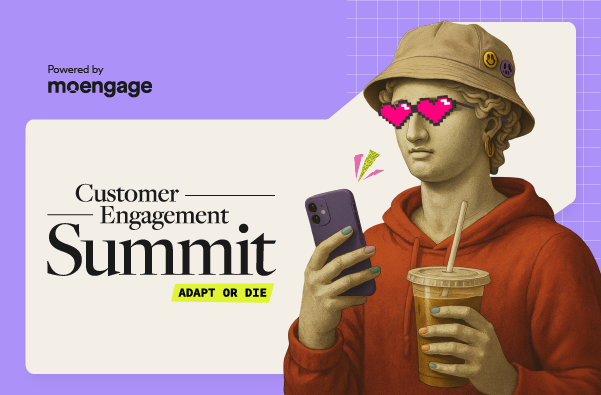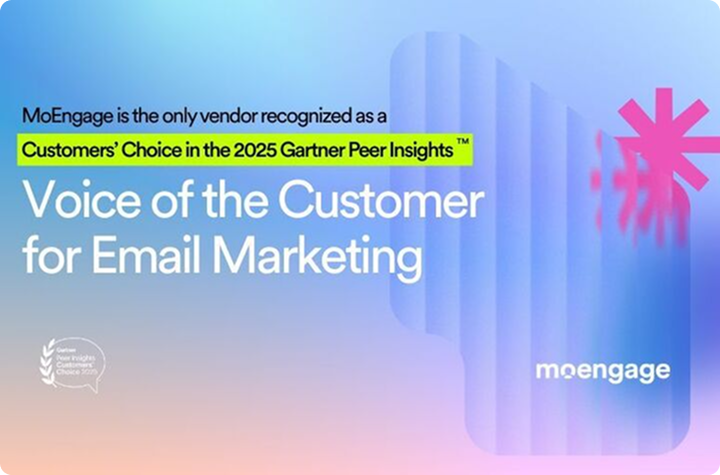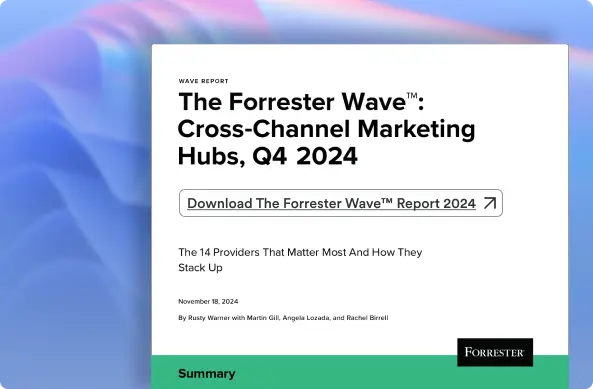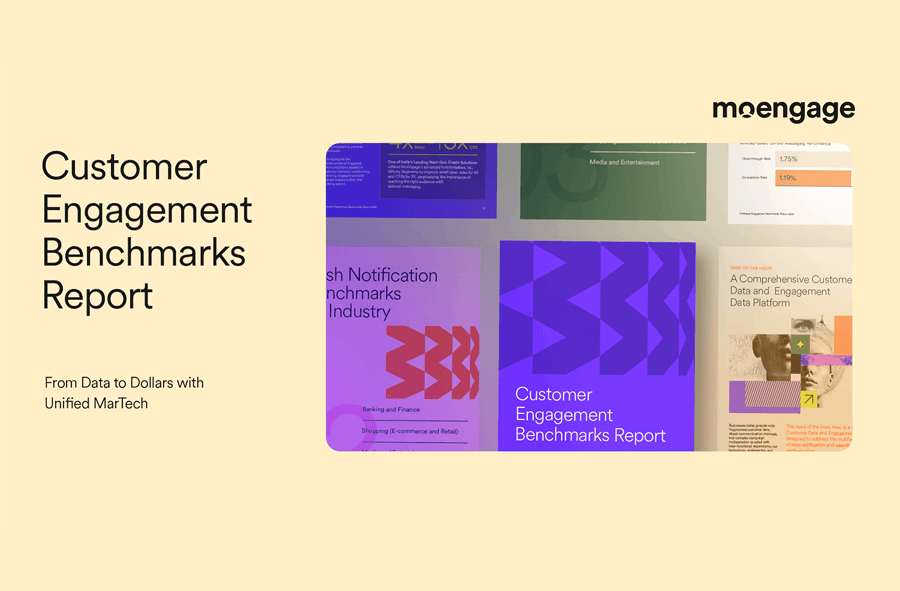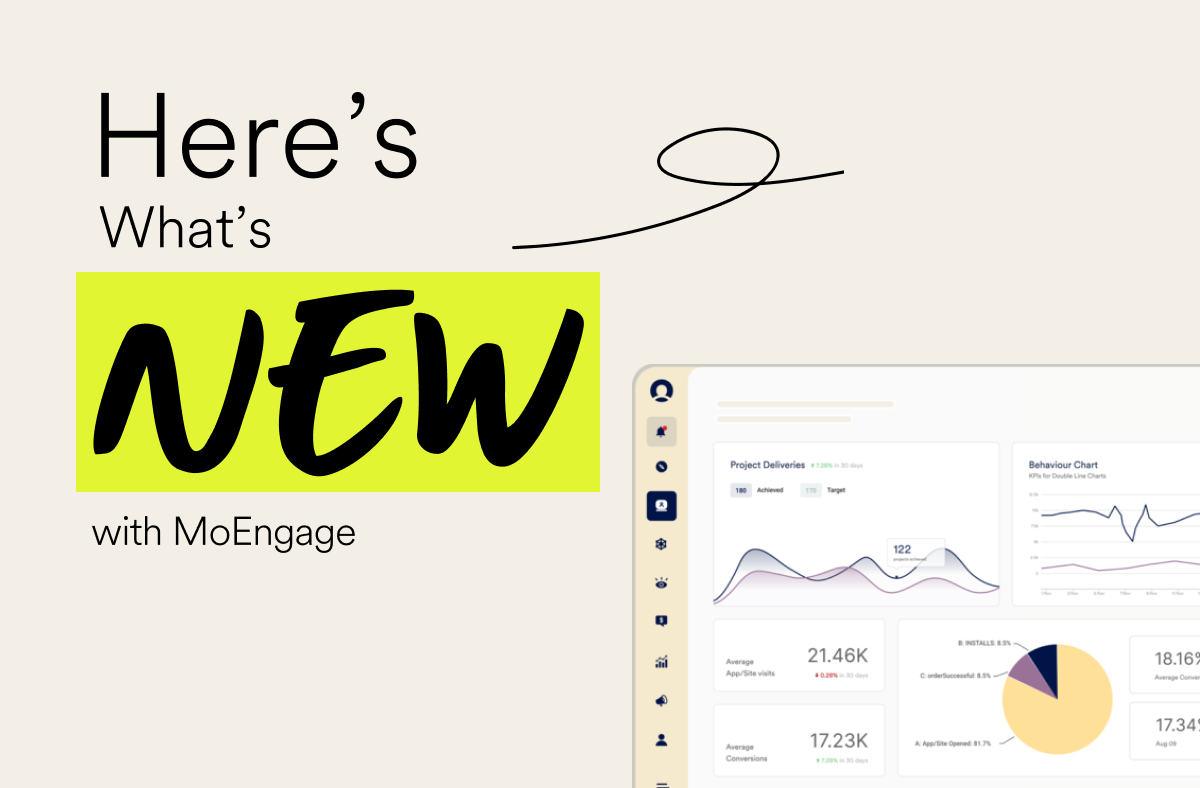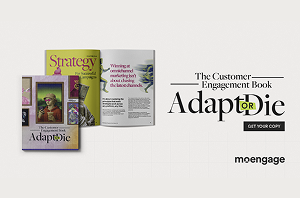Insights from Airtel Digital on The Digital Commerce Revolution: Phygital Is the New Normal
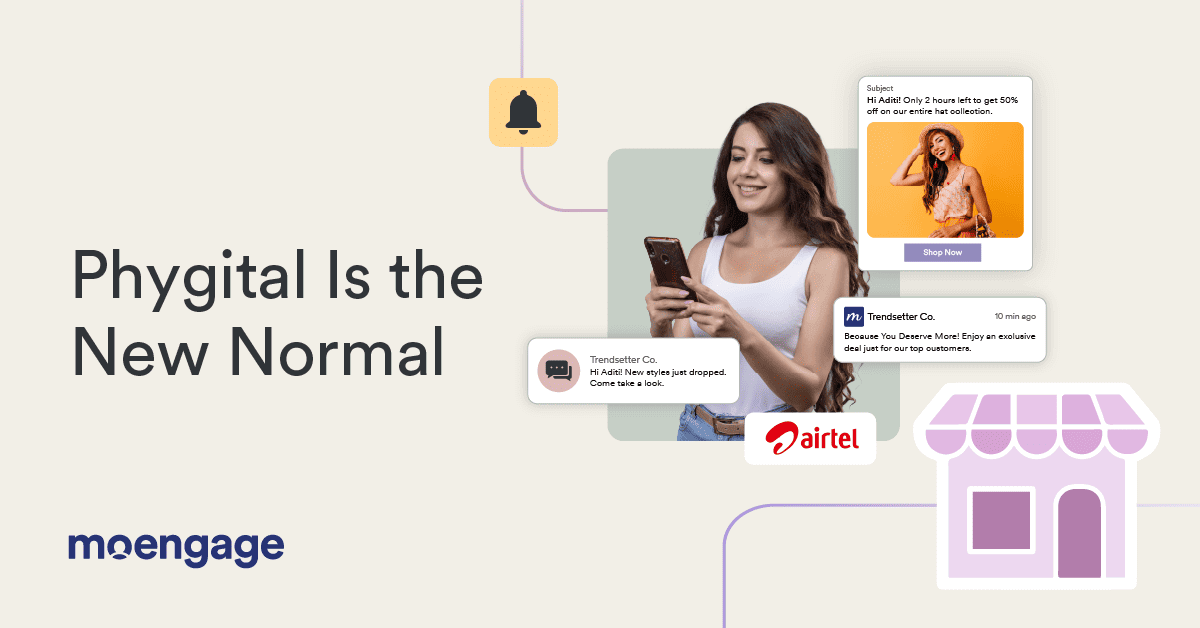
Reading Time: 8 minutes
In India, progress doesn’t move in a straight line. It zigzags.
Millions of people scroll, swipe, and tap their way through daily life on smartphones. But just a few streets away, many others still rely on feature phones to recharge, message, and connect. This is the daily reality for businesses trying to engage an audience that lives both online and offline at the same time.
And this duality is more than an infrastructure issue. It’s a trust issue. It’s about access. And more than anything, it’s about how brands scale personalization in a market where consumer behavior isn’t one-size-fits-all.
This is the backdrop against which we sat down with Varun Das, Executive Vice President and Chief Product Officer at Airtel Digital, during our recent MoEngage #GROWTH Mixer in Delhi. With Airtel serving over 400 million customers and running one of the largest field and retail networks in India, Varun lives with this complexity every day.
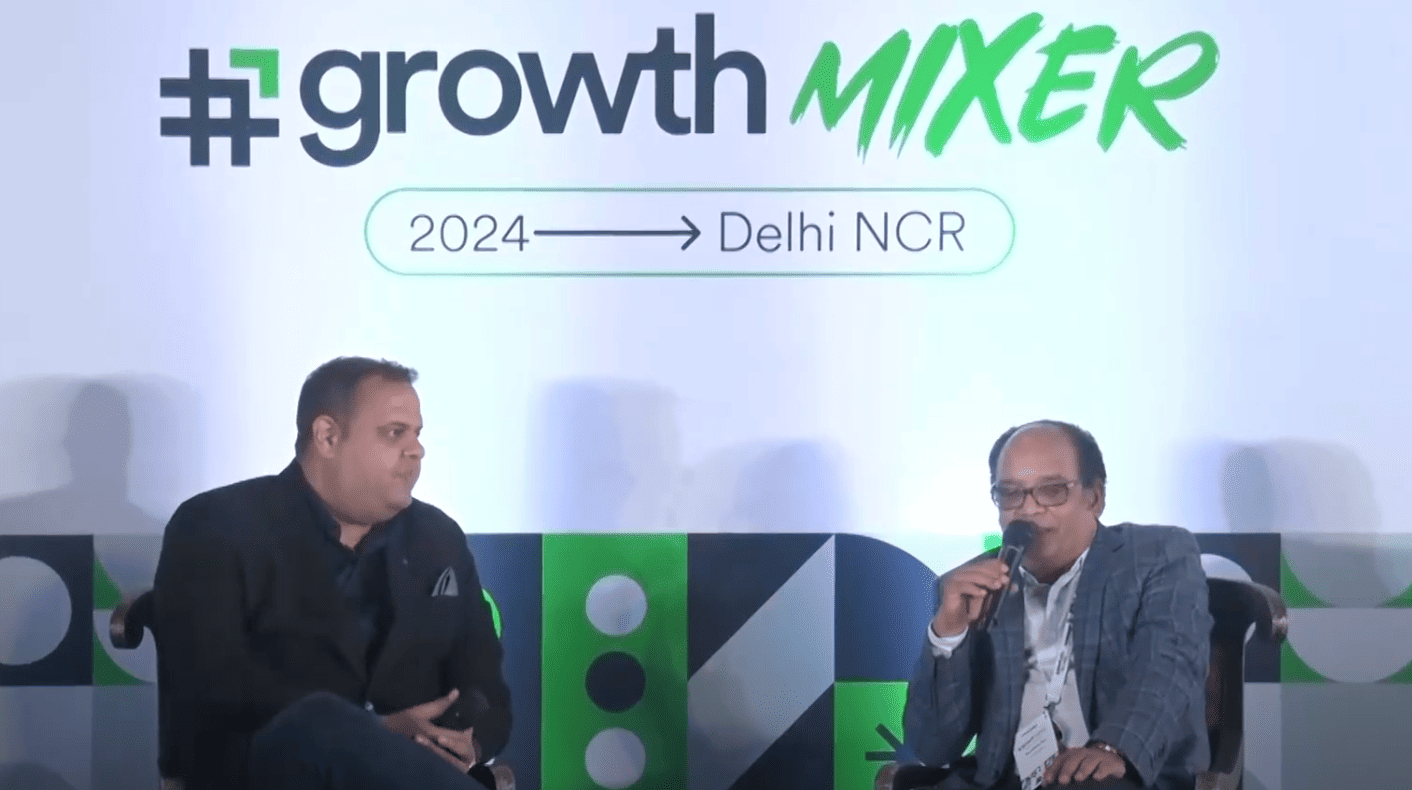
With over 400 million customers and one of India’s largest physical networks, Airtel isn’t just observing this shift—it’s actively reshaping how customer engagement works at scale.
And the shift is undeniable. As Varun put it:
“Pre-2020… about 30% of prepaid recharges happened online. Now it’s at 67%.”
The pandemic didn’t just push customers online—it forced businesses to rethink what engagement actually means when screens and storefronts have to work together. The real question isn’t about going digital or staying physical. It’s: How do you create a seamless experience that respects both?
This isn’t a story of digital transformation. It’s a Phygital Revolution—where the physical and digital aren’t at odds, but in sync.
Understanding the Indian Customer’s Complex Digital Journey
Step onto any street in India—Mumbai, Lucknow, doesn’t matter—and you’ll see a digital paradox play out in real time. A food delivery worker flawlessly toggling between multiple apps despite little formal education. A grandparent scrolls through WhatsApp, exploring features with curiosity, but needs a nudge now and then—a time-starved professional demanding zero-friction service, with no patience for lag or complexity.
More than diversity, it’s a collision of digital realities—precisely what makes India’s digital transformation unlike any other.
To serve this diversified landscape, Airtel couldn’t afford assumptions. So, they introduced a framework that moves beyond age groups, income brackets, or tiered cities. It’s simple yet brutally effective: Digital Affinity, literacy, and time.
“India is dynamic, incredibly diverse,” Varun said. “These three axes help us understand not just who our customer is, but how they behave digitally.”
The result? Dramatically different needs.
- A tech-savvy but busy professional wants frictionless, predictive service, like Airtel’s proactive network alerts before something breaks.
- A low-literacy, high-affinity customer benefits from visual onboarding, explainer videos, and guided app flows.
- A moderate-tech customer with limited time might begin online but rely on assisted channels, like human callbacks or store visits, to finish the task.
What makes Airtel’s approach stand out isn’t just the insight—it’s the operational clarity. They don’t try to push every customer into a digital-only funnel. They design flexible journeys, aligning each step to the customer’s behavior, not some hypothetical persona.
That’s why Airtel continues to expand its digital self-service capabilities and keep physical stores active. It’s why their IVR systems are getting smarter even as the app evolves rapidly. It’s not indecision.
It’s deliberate channel flexibility, rooted in how India truly lives, works, and connects.
Data as the Engine of Real Personalization
In a country of over a billion, “personalization” could sound like a buzzword. Airtel treats it like an operational requirement.
Here’s what that looks like in practice:
A technician shows up to fix a slow connection. In most companies, this would be a basic transactional fix. Airtel takes it further. Because the system knows this customer streams 4K video, it suggests bandwidth optimization, not blindly, but because the data backs it up. At the same time, if the customer has had a poor experience lately—frequent outages, delayed responses—the tech knows not to upsell. The visit becomes one of empathy, not just service.
This is contextual intelligence in action.
Every interaction—digital or human—is informed by a complete view of the customer’s journey: not just what they clicked but how they felt, what went wrong last time, and what might help them next time.
But—and this is critical—Airtel doesn’t just wield data. It respects it.
“With great data comes great responsibility,” Varun noted.
That’s why Airtel’s innovations, like the spam-call detection system, aren’t about extracting value from customers—they’re about protecting them. The system analyzes billions of call patterns—not to sell, but to shield consumers from harassment, fraud, and unwanted noise. In a market where digital literacy varies dramatically, this kind of responsible data use isn’t just good practice—it’s table stakes.
The bigger lesson here? Having more data isn’t the edge. Translating it into real, helpful, human experiences is. And in Airtel’s case, those experiences are stitched into every touchpoint—online, offline, and everything in between.
The Unified Customer Experience: Where MarTech Connects the Dots
Customer digital journeys don’t follow clean funnels—they zigzag. A customer might browse broadband plans on the app during a metro ride, call support during lunch, and finalize the purchase at a store that evening. Each interaction matters. But unless these touchpoints are connected, the big picture never forms.
That’s where MarTech becomes mission-critical—not as a marketing nice-to-have, but as the connective tissue of customer experience at scale.
Airtel doesn’t just operate a website and an app. It orchestrates seven full-stack customer-facing channels—retail stores, IVR, web, mobile app, WhatsApp, social media, and field ops. Without a unifying layer, these channels become silos. With the right MarTech backbone, they become synchronized instruments.
“If I walk into a store and express interest in a product, and then call support later from home, you should know exactly where that conversation left off,” Varun shared. “That’s the omnichannel ecosystem. That’s how you convert intent—because customer intent has a shelf life.”
This insight is sharp and real. In the broadband space, the difference between a lead and a conversion often boils down to hours, not days. The moment someone’s ready to upgrade their plan, delay or friction across channels kills momentum—and the sale.
So instead of building every digital capability in-house, Airtel made a strategic decision: partner where it makes sense.
Platforms like MoEngage can power key layers of the customer engagement stack, allowing the company to stay laser-focused on its core mission—connectivity—while still delivering hyper-personalized experiences at scale.
“I need to go to market fast. I may not have a capability today, and I don’t have the luxury to wait,” Varun noted. “That’s where MarTech platforms play a critical role—especially when your core business isn’t building digital tools from scratch.”
This clarity on when to build and when to partner is often missing in enterprise digital strategy. Too many companies get distracted trying to build everything, only to fall short on execution and customer delight.
Airtel’s revamped missed call notification system is a textbook case of getting it right.
The legacy SMS-based system had inadequate engagement, with only ~2% read rates. Airtel flipped the model. By tapping into network-level data and layering on multichannel orchestration, they started delivering real-time, context-aware notifications through the app or preferred customer channels.
The outcome? Higher read rates, better re-engagement, and a smoother experience for millions, without spending years building a custom system from scratch.
That’s the power of smart MarTech integration and tools like Customer Data and Engagement Platforms (i.e., CDEPs)—not just for campaigns or promotions but as an operational backbone for relevance, speed, and conversion across the entire customer journey.
Personalization at Scale: The Need for Intelligent Engagement
Nowadays, customers demand personalized, relevant experiences across every interaction. However, delivering true personalization at scale isn’t easy. With so many touchpoints, channels, and data sources, how can companies create seamless, individualized experiences for each customer?
The Challenge of Managing Complex Customer Journeys
Think about the journey of a typical customer: they might begin exploring products on a mobile app, seek support via a contact center, research on the website, and ultimately make a purchase in-store. Each of these touchpoints provides valuable insights, but only if they’re properly integrated and connected. The challenge is clear—how do you tie all these interactions together into a cohesive, personalized journey?
The reality is that personalization goes far beyond simply knowing a customer’s name. It requires understanding their behaviors, preferences, and intents and then using that knowledge to drive real-time, contextual engagement. This level of sophistication demands more than just data collection—it requires actionable insights that can be acted on quickly and effectively across multiple platforms.
The Role of Data-Driven Engagement
As businesses grow, the complexity of managing customer engagement multiplies. You need tools that track customer behaviors and predict future actions based on past interactions. This allows businesses to engage proactively and deliver the right messages at the right time, no matter the channel.
To truly personalize at scale, businesses need to:
- Track customer behavior across every channel.
- Use data to predict future actions and preferences.
- Deliver relevant messages at the right time and on the right platform.
It’s not just about collecting data; it’s about transforming that data into real-time insights that drive actionable, personalized engagement.
This is where MoEngage steps in.
With MoEngage, businesses can:
- Analyze customer interactions across all touchpoints, from mobile to in-store.
- Automate personalized messages based on customer behavior.
- Create an omnichannel experience, whether through push notifications, emails, or in-app messages.
MoEngage ensures that companies can deliver contextual, timely, and relevant communication across every channel, no matter where the customer is in their journey.
In the next section, we’ll explore how MoEngage makes it all happen, with real-time insights and a personalized approach to engagement that turns every customer interaction into an opportunity.
MoEngage in Action: Transforming Data into Personalized Engagement
The power of our Customer Data and Engagement lies in its ability to leverage data and deliver actionable insights that drive personalized, meaningful customer interactions. So, how does it work in practice? Let’s explore how MoEngage transforms raw data into real-time, customer-centric experiences.
1. Unified Customer Profile
MoEngage starts by creating a unified customer profile that integrates data from all touchpoints. This gives businesses a 360-degree view of each customer’s behavior, preferences, and interactions. Whether the customer engages with your brand through a mobile app, website, or in-store visit, MoEngage captures all relevant data to build a complete picture.
- Data integration: Pulls together information from multiple sources and databases.
- Personalization: Customizes the experience for each individual based on their past interactions.
This unified profile allows brands to move beyond generic marketing and make each customer feel recognized and valued.
2. Behavioral Segmentation
MoEngage excels at behavioral segmentation, where customers are grouped based on their actions, such as app usage, purchase history, or browsing behavior. By analyzing these behaviors, businesses can create highly targeted campaigns.
- Intent-based segmentation: Categorize customers by their interests or intent to take specific actions (e.g., a purchase or engagement).
- Dynamic updates: As customers interact with your brand, their segment can change in real time, ensuring your communication is always relevant.
For example, if a customer regularly browses certain product categories but hasn’t yet purchased, they can be segmented for a targeted discount offer or a reminder message.
3. Automated Personalization at Scale
Personalization is about more than just sending the right message—it’s about sending it at the right time. MoEngage uses AI-driven automation to ensure personalized messages are delivered when they matter most.
- Trigger-based campaigns: Automatically send messages when customers take specific actions, like abandoning a cart or completing a purchase.
- Multi-channel delivery: Reach customers through the channels they prefer, whether that’s push notifications, emails, or in-app messages.
For instance, a customer who browses products on your app but leaves without purchasing could be automatically sent a push notification or email with a personalized offer, driving them back to complete the purchase.
4. Real-Time Analytics and A/B Testing
MoEngage’s real-time analytics ensure that every message you send is optimized for success. Marketers can view campaign performance in real time, allowing them to adjust strategies on the fly.
- A/B testing: Continuously test different messaging strategies to find the most effective approach.
- Insights dashboard: Track how your customers are interacting with your campaigns and use this data to fine-tune future initiatives.
This allows for ongoing optimization, making sure you’re always improving your engagement strategies.
5. Cross-Channel Orchestration
MoEngage seamlessly integrates across channels, ensuring a consistent experience for customers, whether they interact with your brand on mobile, via email, or through in-person service.
- Omnichannel campaigns: Send consistent, personalized messages across multiple channels without disrupting the customer experience.
- Contextual messaging: Adapt messages based on where the customer is in their journey and which device or platform they are using.
For example, a customer who receives a discount offer on their phone could be followed up with an email that provides more details, creating a continuous, personalized experience.
It’s Time to Connect with Your Customers on a Deeper Level
Customer engagement today isn’t just about reaching out—it’s about reaching in. Regardless of whether you’re delivering a seamless experience across multiple touchpoints or making sure your communication is always timely and relevant, the key to long-term success lies in understanding your customers at a level that goes beyond demographics.
MoEngage gets it by empowering businesses to create real, personalized connections. By using the right data, at the right time, on the right channel, businesses can drive meaningful interactions and transform customer relationships. The result? Better engagement, fewer lost opportunities, and ultimately, greater customer loyalty.
Ready to see how it all works? Reach out today for a demo and see how MoEngage’s CDEP can make a difference for your business.


